Breeding (yikes!)
Unlike most rodents, guinea pigs are born looking like tiny adults. They begin life with their eyes and ears open, and begin running around shortly after birth. This makes for rather large babies, and somewhat complicated births. The first pregnancy usually poses the most risk, and precautions need to be taken to increase the sow's chances of successfully delivering a healthy litter. Due to the frequency of complications, the best way to help a beloved pet guinea pig stay happy and healthy is to avoid breeding entirely. Pregnancy is not only dangerous, but also uncomfortable for sows, and boars often do not get along with their male buddies once they have spent time with one or more females.
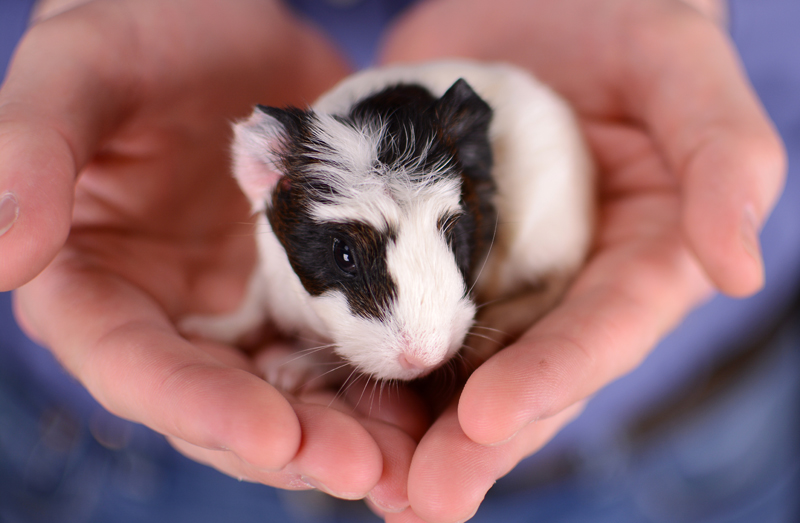
Not Breeding
The health risks of pregnancy and delivery are very high for a female guinea pig, with some estimates at 1 in 5 sows not surviving the process. With this in mind, it is very important that every litter be carefully planned. Avoiding accidental breedings is also difficult because a newborn sow can become fertile as early as four weeks of age and boars can impregnate their mother (or other females) as early as three weeks. Boys and girls in the litter need to be separated as soon as they can be weaned to avoid pregnant babies. A sow can also become pregnant again within two hours of giving birth, but two pregnancies so close together can be devastating for her health. Ideally, her mate should be removed from her enclosure before she gives birth. At Santa Barbara Skinny Pigs, each expecting mother is moved to a maternity suite once it is clear she is pregnant and each of our moms has a litter only once or twice a year.
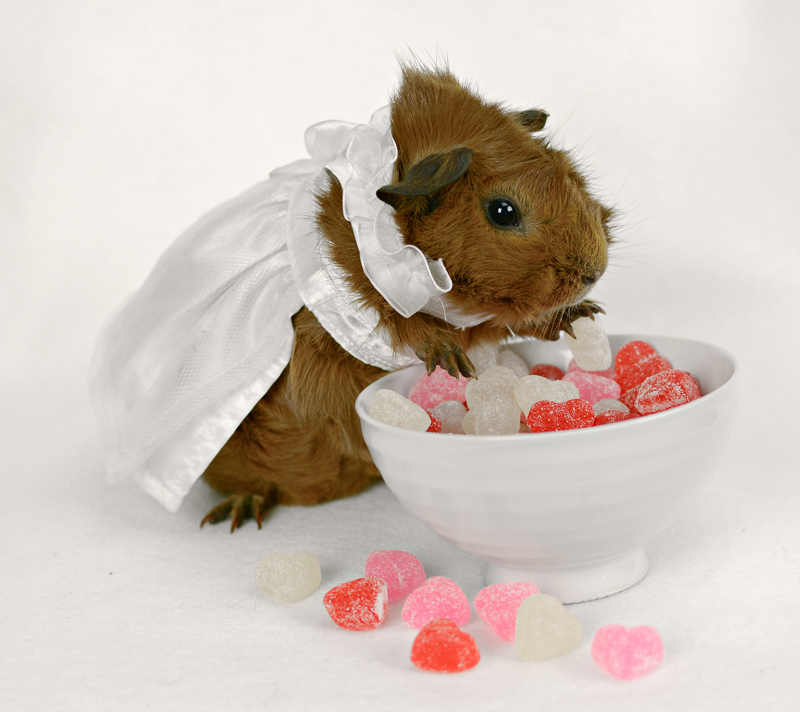
Breed Pairing
Care must be taken when selecting which guinea pigs to breed, and the purpose of the breeding should also be examined. Ideally there should be a goal other than 'making more guinea pigs' or 'because a litter of babies would be so darling'. Both the boar and the sow need to be healthy. The age of the sow is extremely important, under four months of age pregnancy can be detrimental to her growth. Over 12 months the ligaments in her pelvis may be too tight to allow for a successful first-time delivery. Most long-time breeders use 6-9 months as a guide for when to breed a sow for the first time. Though she can become pregnant again within two hours of giving birth, it is far safer and kinder to allow her to rest by spacing out pregnancies to once or twice a year. Birthing more than two litters in her lifetime can also be very hard on a sow. Because the risks of birthing complications are so high, it is very important to locate a veterinarian familiar with guinea pigs before attempting to breed them. Finding an emergency clinic willing and able to treat guinea pigs is also crucial, since if intervention is needed, it must happen quickly.
Gestation
Guinea pigs have much longer pregnancies than most rodents, this allows them to deliver a small number of well-developed babies. Gestation is usually 59-72 days, or 2-2.5 months. The gestation period of a rat is around 21 days, or three weeks. Hamsters can be pregnant for 18-30 days depending on the species, and mice generally have their babies within 18-21 days. The reason for the longer pregnancy is obvious when comparing the results. Other rodents are born blind, deaf, and hairless. Guinea pigs are very much like baby horses, born furry with bright eyes open and ready to run around almost immediately.
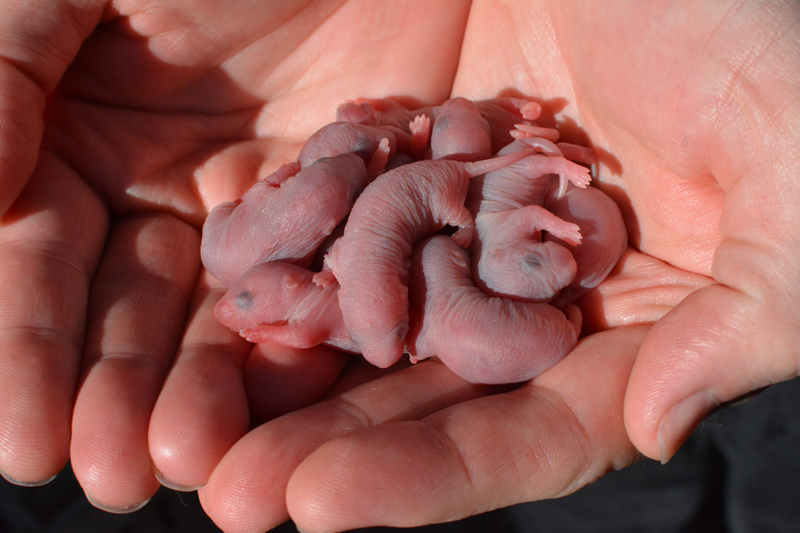
During her pregnancy, a sow will need plenty of room to move around, an abundance of good food and fresh water, and plenty of rest. Often her weight will double and in the late stages it will be difficult to move around. Care must be taken to set up her enclosure so that her enormous belly does not prevent her from entering or exiting her favorite hiding spots.
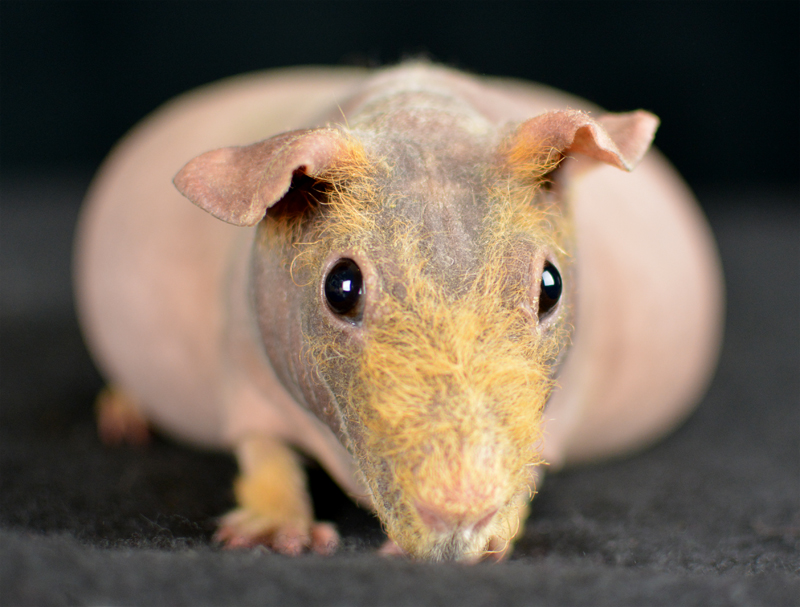
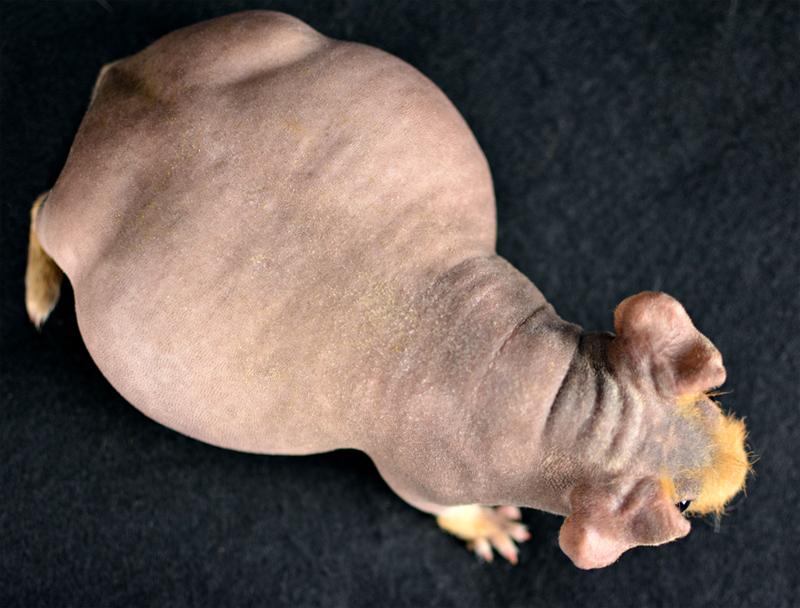
Birth
It can be helpful for a breeder to be present for the birth, but too much interference can be stressful for the sow. Things should progress fairly quickly, and the choice to seek medical care from an experienced guinea pig veterinarian needs to be made if it has been much more than 30 minutes since labor began. If there is more than a few drops of blood, no progress for more than ten minutes, if a baby gets stuck, or if the sow seems exhausted or in pain, it is time to go to the vet. The new mother will usually clean the babies and consume the afterbirths, leaving very little evidence. If the birth was not witnessed, it is important to check the enclosure thoroughly and remove any remaining byproducts.

Caring for the New Mum
Delivering a healthy litter does not mean a sow is out of danger yet, a variety of health problems can take her life within a few days of the birth. She must be watched carefully for lethargy, dehydration, and lack of appetite. The sow can be gently handled to check for mastitis. The best way to monitor the health of the new mother and her family is to weigh everyone on a daily basis. A digital postal or kitchen scale may be used, babies that do not gain weight regularly may need extra supplementation.
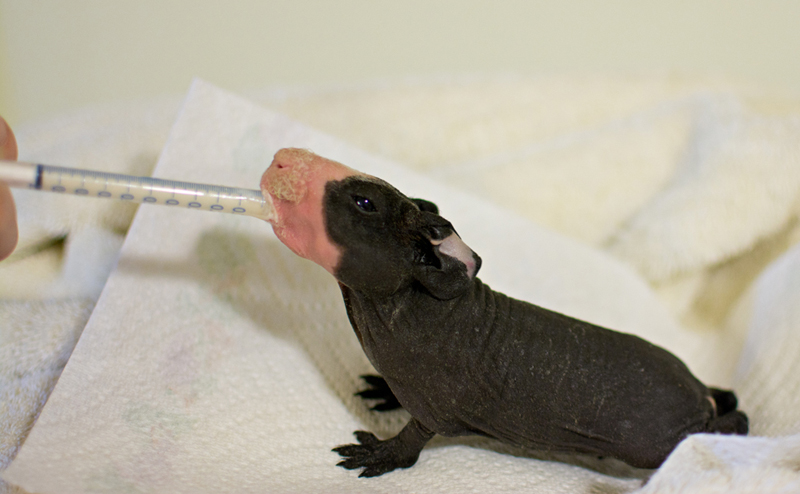
Skinny Pigs
There are some special considerations when breeding skinny pigs. Their delicate skin can easily be damaged, so care must be taken when introducing the boar and sow. If they do not get along right away, it is best to reconsider the pairing. A heavily pregnant skinny sow can look rather alarming, and without a layer of soft fur, the strain on her body is extremely apparent. Care must be taken to ensure she has plenty of space to move around in her enclosure, and furnishings/hide boxes must not have sharp or rough edges or corners as she may injure herself as she grows larger.
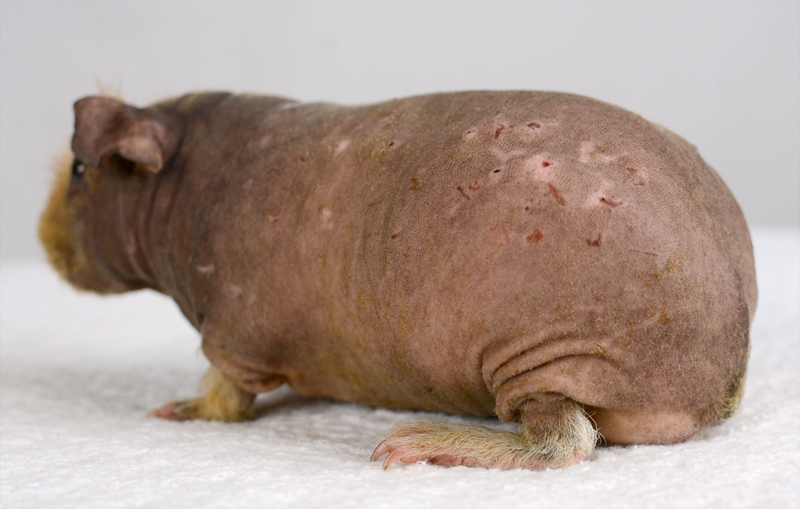
Risks
The risks of breeding a beloved female guinea pig cannot be overstated. Though experience, excellent care, and timely medical intervention can give her the best chance of surviving to raise a healthy family, death is not always preventable. Many birthing complications can only be remedied by caesarian section, and the prognosis for this surgery is not good.